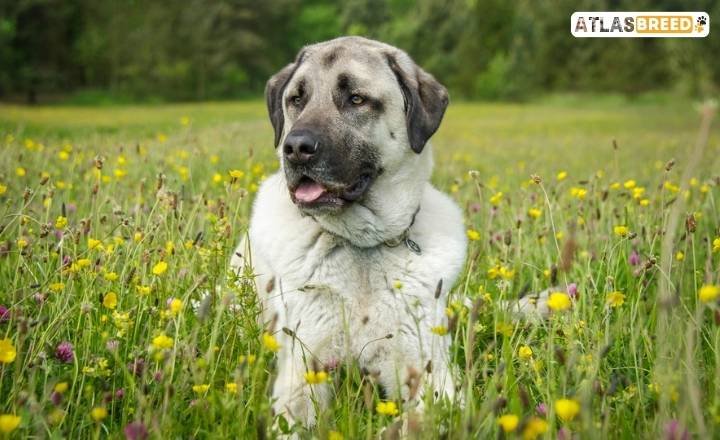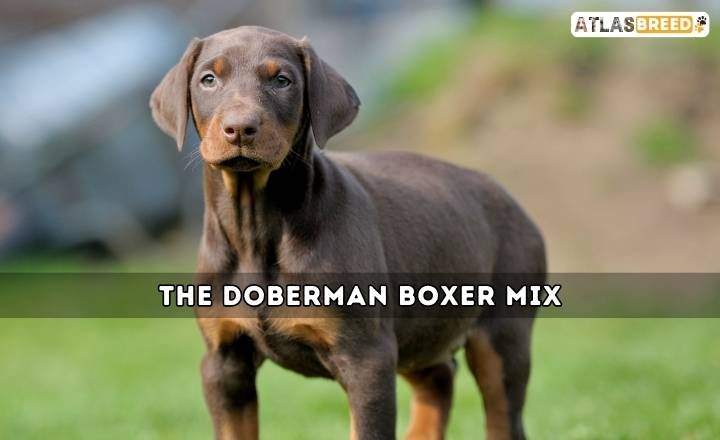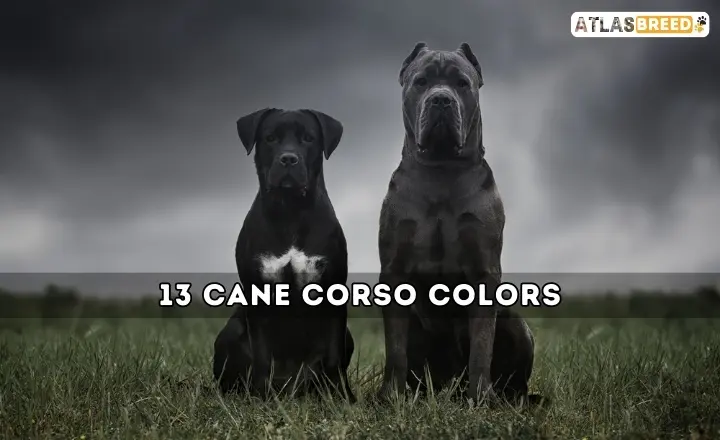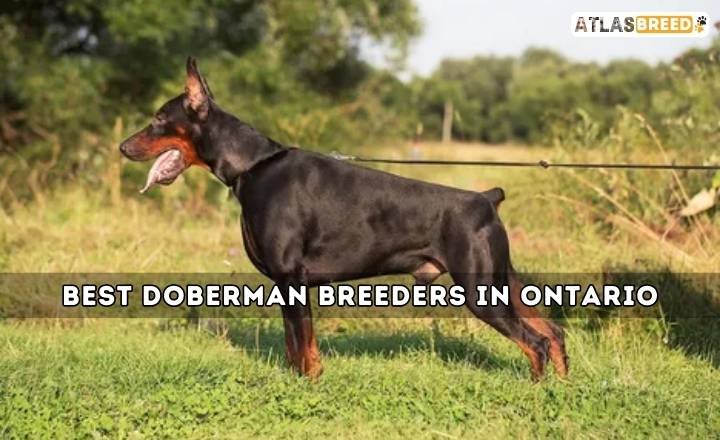Images of the majestic Anatolian Shepherd likely come to mind when you think of its steadfast gaze and powerful physique. Its impressive stature does not just define this remarkable breed; it’s also a canvas of stunning colors that reflect the rich tapestry of its Anatolian heritage.
From striking cream hues to deep fawns and bold brindles, the variations in Anatolian Shepherd colors are as captivating as the history behind them. Each shade tells a story, weaving together traditions and landscapes from ancient times when these dogs roamed freely across vast Turkish plains.
Anatolian Shepherd Colors Registered By The American Kennel Club
The Anatolian Shepherd is a striking breed known not only for its impressive stature but also for its varied coat colors, which enhance its rugged beauty. Registered by the American Kennel Club (AKC), these dogs exhibit a range of hues including fawn, brindle, and white, often with distinct markings that add to their character.
While many enthusiasts appreciate the traditional fawn color, others find the unique patterns in brindle combinations particularly captivating. For instance, brindle coats may suggest a stronger inclination toward herding instincts due to their historical lineage in guarding livestock across diverse terrains.
Biscuit & White
This particular color pattern enhances the breed’s majestic appearance and reflects its adaptability to diverse environments. The warm biscuit hue often signifies a well-nourished dog, working diligently under the sun, while the stark contrast of white brings attention to its noble stature.

It serves a practical purpose; this coloration helps them blend into their surroundings during daylight hours while still being distinct enough for visibility when near shepherds or farmers.
Fawn
This rich hue not only enhances the breed’s formidable presence but also serves practical purposes in their historical context as livestock guardians on the rugged terrain of Anatolia. The fawn coats can vary in shade from light tan to deeper golden tones, providing excellent camouflage against various natural backdrops.
Breeders often emphasize this color for its beauty and how it aligns with the dog’s overall structure and health traits, ensuring that functionality is never compromised for appearance alone.
Brindle
Brindle is characterized by a unique mix of dark stripes overlaying a lighter base coat, giving these dogs an elegant yet formidable appearance. This striking coloration enhances their aesthetic appeal and serves as camouflage in their natural environment, helping them effectively guard livestock against predators.
Blue Fawn
Among these variations, the blue fawn color stands out as particularly captivating. This hue presents a unique blend of a silvery-blue coat with subtly darker shades that can evoke images of twilight skies.
The blue fawn coloration enhances the dog’s aesthetic appeal and embodies their noble character, making them a favorite in breeding circles.
Gray Fawn
Gray fawn Anatolian Shepherds reflect the breed’s rich heritage, originating from ancient nomadic cultures in Anatolia. Their coat not only serves as a practical adaptation against diverse climates but also enhances their distinctiveness within dog shows and breeding circles.
When properly groomed, this color can exhibit subtle variations in tone that further emphasize the noble stature typical of this livestock guardian. These dogs are not merely companions; they embody strength and loyalty wrapped in an eye-catching coat that draws admiration.
Red Fawn
This unique hue combines shades of reddish-brown with a fawn undertone, creating a captivating warmth that sets these dogs apart. When seen against their solid black or white counterparts, Red Fawn Anatolian Shepherds become visual highlights in both working environments and family settings.
This coloration isn’t merely cosmetic; it holds significance within the breed’s history. Originally bred to protect livestock in the diverse landscapes of Turkey’s Anatolia region, these shepherds’ coats adapted for camouflage amid varying terrains—from grassy plains to rocky outcrops.
Liver
This unique color stands out not only for its rich, deep tone but also for the regal presence it conveys in this powerful breed. The liver coloring can range from a warm auburn to a darker chestnut shade, allowing owners to appreciate diverse shades within the same breed standard.

This coloration can enhance the breed’s natural guardian instincts; with their keen awareness and commanding demeanor, they possess an almost majestic quality when sporting this hue.
White
This pure white coat not only exemplifies the breed’s majestic stature but also reflects its historical role as a guardian against predators in harsh terrains. The stark whiteness can serve as both an advantage and challenge—while it emphasizes their formidable appearance, it also requires consistent grooming to maintain the coat’s health and luster.
In many rural settings where they perform their duties, a white coat allows them to blend seamlessly into landscapes often washed in snow or rocky cliffs. However, owners should consider the maintenance required for this color, as any dirt or stains are more visible compared to darker hues.
Anatolian Shepherd Markings Registered In The American Kennel Club
The Anatolian Shepherd mix is celebrated not only for its impressive working abilities but also for its striking appearance, which varies across an array of colors and markings. Registered with the American Kennel Club (AKC), this breed showcases a genetic diversity that includes a palette ranging from fawn and brindle to white and even piebald.
Although fawn is the most common coloration, less typical hues can include various shades of gray, liver, or even a mix of these tones featuring distinctive black masks that highlight their robust features.
Black Mask
Among these, the black mask marking stands out as a distinguishing feature registered with the American Kennel Club.
This striking contrast against lighter shades such as cream or fawn not only enhances the breed’s noble appearance but also holds cultural significance. In many traditions, a well-defined mask symbolizes guardianship—a fitting trait for this ancient livestock protector.
Brown Mask
This distinctive marking not only enhances the dog’s regal appearance but also signifies a very specific genetic trait recognized by the American Kennel Club (AKC). The brown mask typically contrasts beautifully with the lighter shades of cream or fawn, making these dogs stand out in both working scenarios and competitive settings.
From a practical standpoint, the presence of a brown mask can serve as an indicator of temperament. Breeders often note that those with this marking display strong protective instincts and a keen awareness of their surroundings.
Silver Mask
This distinguishing feature not only enhances the dog’s regal appearance but also serves a functional purpose—camouflaging them in their natural environment while guarding livestock. Registrations with the American Kennel Club (AKC) highlight these silver-coated individuals, making them both visually stunning and emblematic of breed standards.
Dutch Markings
Among the registered patterns in the American Kennel Club (AKC) are the striking Dutch markings, characterized by their unique emphasis on white coats accented by patches of color.

This specific pattern not only enhances the visual appeal of these dogs but also serves practical purposes; it helps to camouflage the shepherds in diverse terrains while maintaining attention-grabbing traits known for their protective instincts.
Pinto
These distinctive patterns can vary dramatically, transforming each dog into a visual masterpiece with patches of white accented by darker shades like fawn or brindle. This rare coloration not only enhances the breed’s allure but also adds to its recognition as an exceptional guardian animal.
The unique markings do not hinder their instinctual herding abilities; instead, they symbolize an adaptive resilience that has been cultivated over centuries in harsh terrains.
Pinto, Black Mask
The Anatolian Shepherd is not only renowned for its remarkable protective instincts but also for its distinctive and varied coat colors. Among these, the pinto marking—a unique blend of white with patches of color—stands out as a striking visual characteristic that many enthusiasts appreciate.
This particular pattern exemplifies the breed’s adaptability to diverse environments, echoing their historical role in Turkey as effective livestock guardians. When it comes to registering these beautiful canines with the American Kennel Club (AKC), understanding their markings plays a crucial role in preserving the integrity of this ancient breed.
Color Genetics Of Anatolian Shepherds
The color genetics of Anatolian Shepherds is a fascinating topic that reflects both the breed’s history and functional purpose. These dogs exhibit a variety of colors, ranging from fawn to brindle, and even white or cream shades, each influenced by specific genetic factors.
The dominant and recessive genes at play determine not only the visible coat colors but also their suitability for tasks such as herding and guarding. Understanding these genetic patterns can provide prospective owners with insights into which traits may be more prevalent in individual dogs.
10 Categories Of Genes Responsible For Canine Coat Color
A series
The coat color of the Anatolian Shepherd is an intriguing subject, deeply rooted in genetics. Among the ten categories of genes responsible for canine coat color, we find the Agouti gene plays a significant role.
This gene determines whether a dog will exhibit a solid or patterned coat and influences variations like fawn, brindle, or even sable shades that are commonly seen in Anatolian Shepherds.
B-b pair
The B-b pair, crucial in determining canine coat color, reveals remarkable genetic complexities, particularly within the Anatolian Shepherd breed. This breed often exhibits a variety of hues influenced by the B gene (black) and its recessive counterpart b (brown).
The interplay between these alleles can produce stunning variations from deep blacks to warm chocolate browns, showcasing nature’s artistry and the breed’s adaptability to various environments.
C series
The genetic complexity governing canine coat colors can be fascinating, particularly when exploring the Anatolian Shepherd. Within their striking hues, ten gene categories play crucial roles, influencing everything from shade depth to pattern intricacies.
The A series (Agouti) governs the distribution of pigment across the dog’s body, affecting whether your Anatolian appears in a sable or a more solid hue.
D-d pair
The D-d gene pair is pivotal in determining the distribution of pigment within a canine’s coat, specifically influencing the Anatolian Shepherd colors. Within this gene framework, ten categories delineate various shades and patterns.
The dominant allele “D” produces a “full color” coat, enabling a vigorous expression of hues such as fawn or sable. Conversely, the recessive allele “d” leads to dilution, resulting in paler variations like cream or light apricot—witnessed prominently in some Anatolian Shepherds.
E series
The E series of genes plays a crucial role in determining the coat color variations seen among dog breeds, including the Anatolian Shepherd colors. This genetic framework includes various alleles that influence the expression of pigments in the hair follicles, ultimately determining whether a dog presents a more dominant or recessive color pattern.
G-g pair
When examining the coat color of Anatolian Shepherds, two key gene pairs stand out: the Agouti (A) locus, which determines the distribution of black pigment in the fur, and the Extension (E) locus, crucial for determining whether a dog has any red or tan color.
The interplay between these categories plays a significant role in achieving variations such as fawn, brindle, or solid coats.
M-m pair
The M (dominant) allele contributes to more vibrant, fully pigmented coats, while the m (recessive) variant allows for diluted colors such as fawn or cream to emerge, creating a beautiful spectrum of shades.
This genetic interaction not only highlights the diversity within this breed but also underscores how nuanced genetic combinations craft unique individual identities.
P-p pair
Understanding the genetic framework behind canine coat colors can be a complex but fascinating journey, especially when dissecting the P-p pair in breeds like the Anatolian Shepherd. This pair significantly influences pigmentation intensity and pattern variations.
For instance, the presence of dominant alleles can determine whether a coat exhibits rich reds or subtle fawns, while recessive variants might yield softer pastel hues.
S series
Among these categories, the Agouti gene plays a pivotal role in determining the specific shades and patterns. Depending on its expression, this gene can manifest in solid colors or produce striking brindle patterns that enhance an Anatolian Shepherd’s appearance.
The Sphinx allele can introduce unique patching effects, permitting combinations of white with various base colors, while Ticking contributes flecks throughout a solid or patterned coat—elements often overlooked in discussions about breed standard appearances.
T-t pair
The genetic tapestry that governs canine coat color is intricate, especially when examining the T-t pair in breeds like the Anatolian Shepherd. This pair primarily influences whether a dog’s coat exhibits black or tan coloration, significantly impacting appearance and breed identity.
Variations within these categories can lead to a rich palette of colors ranging from deep mahogany to striking sable, highlighting the role of modifier genes that interact synergistically with the primary T locus.
Conclusion
The Anatolian Shepherd Colors are remarkable breed known not only for its impressive guarding abilities but also for its diverse range of colors and markings. From the traditional fawn and brindle to rarer shades like white and black, each color variation adds unique characteristics to this noble breed.
Understanding these color patterns can enhance your appreciation for the Anatolian Shepherd, whether you are a potential owner or an enthusiast of dog breeds.
FAQs
What color is an Anatolian shepherd’s coat?
The classic coloring of this breed is fawn with a black mask. Other colors may include pinto, white, or brindle. Short and rough coats can be found within the same litter.
What color is Kangal fur?
The Kangal dog is a whole coloured dog, ranging from cream through fawn, to dun or steel grey, with characteristic dark or black mask and ears.






